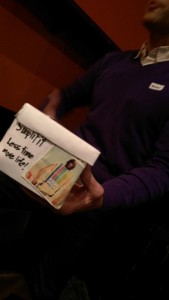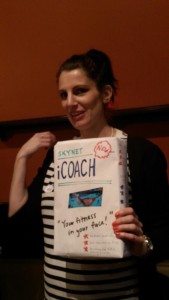Our session in July focused on start-up product management – specifically when the start-up is small enough that the founders are the product managers. Morgan Ranieri & Francisco Trindade, co-founders of Melbourne based YourGrocer, shared their experience of defining their product which is working on making local shopping convenient.
Morgan & Francisco shaped their story around 4 areas:
- Pragmatism
- Nothing is going to work
- Customers, customers, customers,
- Focus
Morgan opened with the vision of YourGrocer, which is to level the playing field between local shops and supermarkets. The guys assumed people wanted to buy locally and needed it to be convenient.
They are growing 10% a week since promoting the business in December last year yet are still buckling down each week to see how they are doing against their metrics, whether they are prioritising the right items for their customers and still finding time to dream big.
1. Pragmatism
Morgan & Francisco have needed to stay open to what they are learning and respond to it – as well as understand their vision and know why they are here building this business.
Morgan talked about validating their MVP as getting people to order & to have the deliveries made. He got a friend to set-up their website and hired a van to do the deliveries. He found he could order fruit, vegetables, meat & bakery items so they could start testing their MVP.
But when he told his friends about the idea – only 2 out of 40 people said they would use it and the 2 never ordered again. Morgan discovered early he had gotten his customer type wrong!
With minimal upfront investment, he ticked all the other boxes but needed to check with a new customer group. When his friends’ mums started ordering – and reordering – he was ready to embrace the true customer. This is how YourGrocer got started – with 8 deliveries a day for 2 days a week.
A key thing to remember is the difference between what you hypothesise compared to what you learn when you hit the ground. Instead of spending a lot of money up front, Morgan & Francisco try to keep development to 2-3 hours so if something doesn’t work out, it’s not a massive loss. They want to get the most learning in the least amount of time to put something out there.
The great part about this stage of their business and growth is that they have a good relationship with customers and can ask them directly or test things via email. If they click on a button, it let’s them know that an action was taken and then they follow through to find out what was expected by ringing them.
2. Nothing is going to work
This is a mantra the guys have adopted to help them keep a happy mindset (not a negative one as the title might first imply!).
Sometimes they have tried things, were worried it might succeed really well and they wouldn’t be able to cope with all the orders that would roll in! This mindset helps the team keep perspective and assists with bouncing back to try the next thing and not to worry that they won’t come up with another idea or solution.
They measure success with a small amount of key metrics, using a weekly/monthly review to decide which of the following they need to focus on:
- more customers
- customers buying more
- customers buying more frequently
- expanding suppliers
3. Customers, customers, customers
The guys would love to interview their customers all the time but it takes quite a bit of time! Earlier this year they dedicated time to interviews and they do so whenever they feel they need a check in. When they felt their ideas started to be too much like ‘people like Morgan’, they interviewed customers again to make sure they were thinking about them first & foremost.
Morgan and Francisco used the JTBD technique for the interviews. They struggle with the fact that they have a million ideas but just cannot get to them so eventually they got rid of the backlog as they ran out of wall space.
One of our audience, Lisa, called out with a suggestion to create an ideation space instead of a backlog. She described the backlog as a “wall of pain” which received some nods from the Product Anonymous audience. Morgan and Francisco appreciated the suggestion as a way to help them continue to foster their big plans.
4. Focus
Perhaps another word for prioritisation but definitely super important when time is so essential and there are so many things one could do. The metrics are key to review each week and assess against their monthly goals. This way they can see what is not working and what they need to focus on next.
Questions from the audience included:
- Ways to gain additional knowledge of customers – like inviting them to dinner
- Customer Acquistion- They discussed their referral incentive program where both referrer and referee receive free milk. This has been a success but they need to figure out if the cost of acquistion is too much
- Lean principles – practice is difficult! 150 active customers, 500 people on mailing list, so sometimes the data just isn’t meaningful.
- Expanding their customer base – to organisations like schools and daycare
- Having customers champion the product for you
We formally wrapped the session but everyone’s curiosity could not be contained and more questions flowed after that. Thanks to Morgan and Francisco for coming along to tell their story and face the crowd:-) (If you’re looking for the evening’s full info: see our post last month)
Our next session – Communicating the value of mobile – is on the 21st of August so RSVP now.




